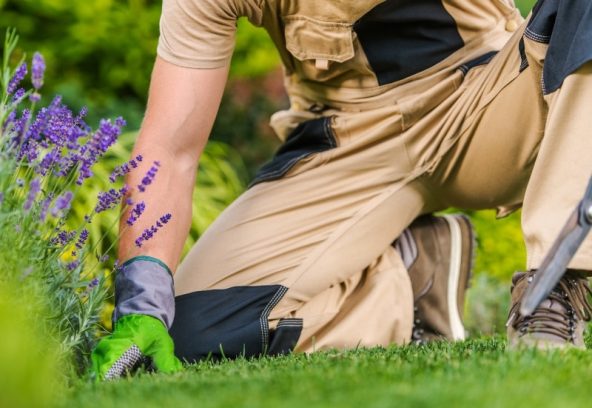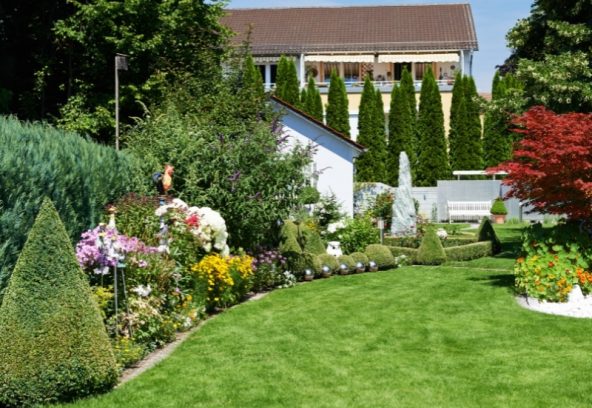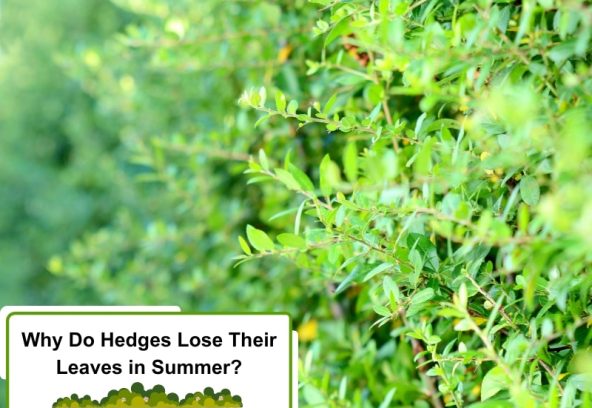Why Do Hedges Lose Their Leaves in Summer?
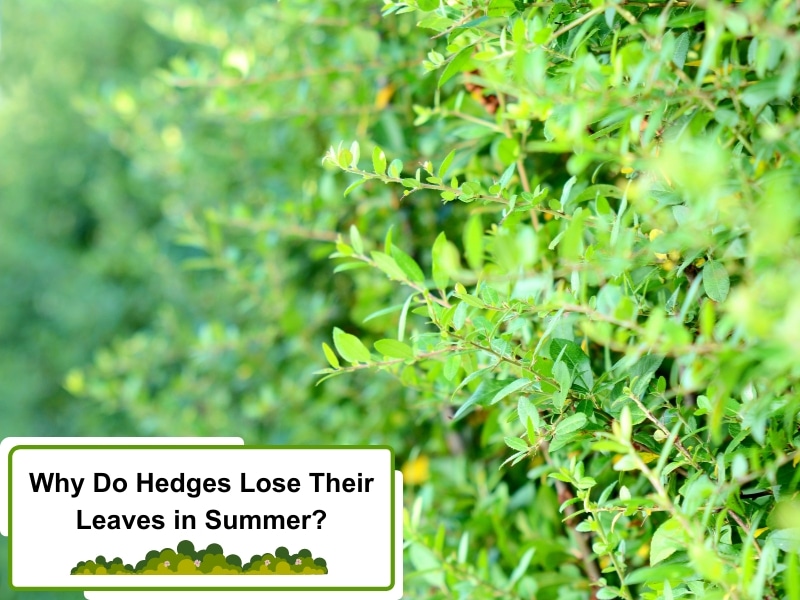
Hedges are a staple in many Australian gardens, offering privacy, shade, and aesthetic appeal. However, hedge losing leaves can be concerning, especially during summer. While leaf loss may sometimes be a normal process, it can also be a symptom of underlying issues. This article explores the common causes of leaf drop in hedges, the role of mulch, and practical advice on keeping your hedges healthy and vibrant throughout summer.
Common Reasons Hedges Lose Leaves in Summer
Several factors contribute to hedge losing leaves during the summer, some environmental and others related to plant health. Understanding these causes can help prevent further damage and keep your hedge looking its best.
- Heat Stress: Extreme heat is one of the primary reasons why hedges drop their leaves during summer. Prolonged exposure to high temperatures can cause the plant to go into survival mode, shedding leaves to reduce water loss. Species like boxwood and privet are particularly susceptible to heat stress, especially when exposed to direct sunlight for long periods.
- Watering Issues: Inadequate watering is another major culprit. When hedges don’t receive enough water, they shed leaves to conserve moisture. Overwatering can be equally harmful, causing the roots to rot and preventing the hedge from absorbing nutrients.
- Pest Infestations: Insects such as aphids, caterpillars, and mites can damage hedges’ leaves, causing them to fall off. These pests often thrive in hot conditions, making summer a peak season for infestations.
- Nutrient Deficiencies: Like all plants, hedges need specific nutrients to stay healthy. Nitrogen, potassium, or phosphorus deficiency can result in yellowing leaves and premature leaf drop.
The Role of Mulch in Hedge Health During Summer
Mulch is vital in protecting hedges from the harsh Australian summer sun. Without it, hedges risk drying out or becoming stressed due to temperature fluctuations.
- Water Retention: Mulch helps retain moisture in the soil, ensuring the roots have a steady water supply. Research shows that a 5 to 10 cm layer of organic mulch can reduce water loss by up to 30%, helping hedges remain hydrated during dry spells.
- Temperature Regulation: In summer, soil temperatures can soar, damaging the roots and causing the hedge to shed leaves. Mulch acts as an insulating layer, preventing soil temperatures from becoming too hot.
- Weed Control: Without mulch, weeds can quickly grow around the base of your hedge, competing for nutrients and water. Mulching can reduce weed growth by up to 70%, allowing your hedge to thrive.
Is It Normal for a Hedge to Lose Its Leaves in the Summer?
Some level of leaf loss is expected, but excessive shedding should be addressed. Various factors influence leaf drop in summer, including the type of hedge, environmental conditions, and care practices.
Species Characteristics: Certain hedge species are deciduous, meaning they naturally lose their leaves at certain times of the year, often in response to temperature changes. For example, species like the privet or boxwood may shed more leaves during periods of intense heat.
Climate Conditions: In Sydney’s Mediterranean climate, hot and dry summer conditions can stress many plants, resulting in leaf drop. Research from the Australian Bureau of Meteorology indicates that summer temperatures in Sydney frequently exceed 35°C, making it a challenging environment for many types of hedges.
Environmental Stress: Environmental factors such as sudden changes in watering habits, nearby construction, or pollution exposure can also cause leaf drop in hedges.
Practical Tips for Keeping Your Hedges Healthy in Summer
Regular Trimming: Regular trimming prevents hedges from becoming overgrown, which can lead to problems with pests and diseases. It also encourages denser growth, making your hedges look fuller and more attractive.
Consistent Watering: Water deeply and consistently to maintain healthy hedges. Ensure that your hedge receives sufficient water, especially during dry spells. A deep watering strategy that soaks the soil 30 to 45 cm deep will promote deeper root growth, making the hedge more resilient to heat stress.
Fertilising: Apply a balanced, slow-release fertiliser to provide essential nutrients. This supports healthy growth and helps the hedge withstand environmental stresses.
Pest Control: Monitor your hedge for signs of pests. Early detection allows for timely intervention, preventing significant damage.
By understanding the causes of leaf drop and implementing these care practices, you can ensure your hedges remain healthy and vibrant throughout the summer.
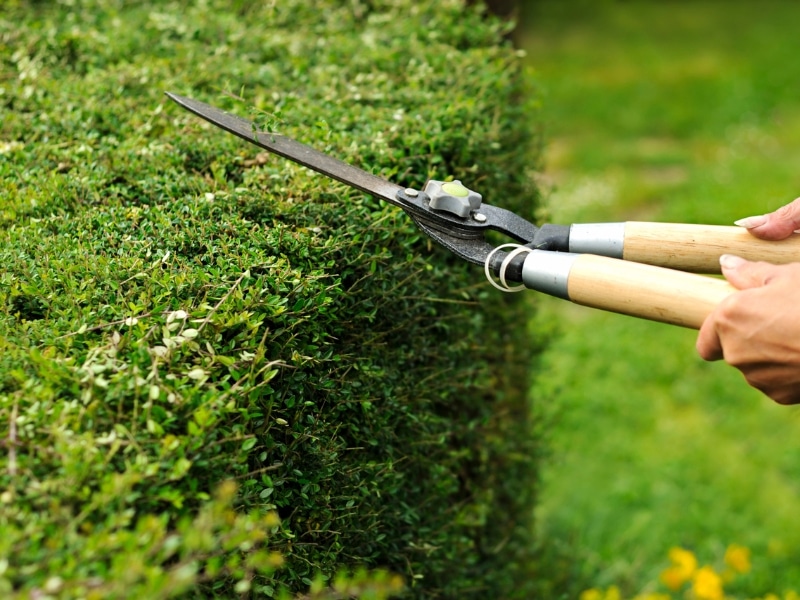
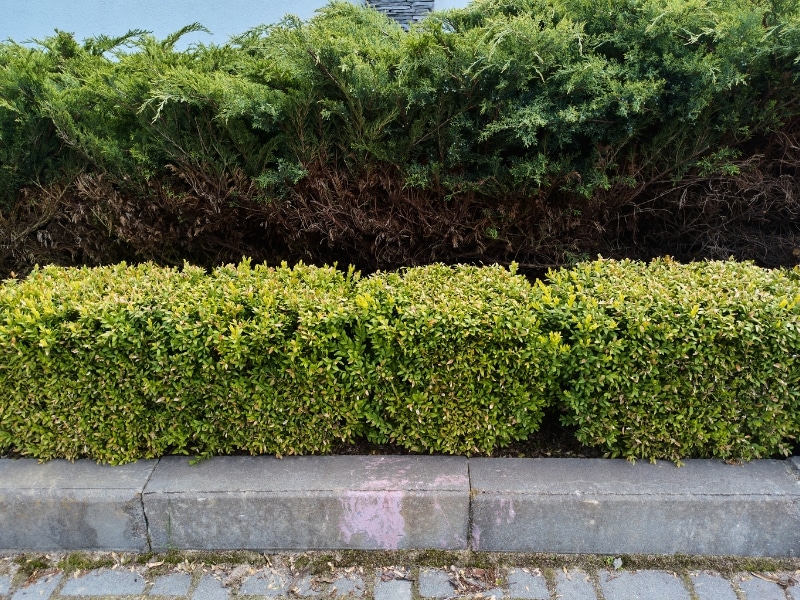
Can you lay turf over old grass without issues?
At first glance, laying turf over old grass may seem like a practical shortcut. However, there are several factors to consider before proceeding:
Thatch buildup: Old or dead grass can develop a layer of thatch, which blocks the new turf’s roots from reaching the soil.
Poor root contact: Healthy root contact is essential. New turf laid over old grass might struggle to bond with the soil underneath
Weed growth: Existing weeds can push through the new turf if not adequately dealt with before installation.
Unlevel surface: Old grass can create an uneven surface, leading to a bumpy lawn.
Pest habitat: Dead grass can provide a breeding ground for pests that could damage the new turf.
While it may seem convenient, laying turf over old grass without proper preparation often results in poor outcomes, costing more time and money in the long run.
Should you level the area before laying turf?
A level surface is the backbone of a good-looking, healthy lawn. Here’s why skipping this step is a mistake:
Prevents water pooling: An even lawn ensures water spreads uniformly.
Better turf bonding: Turf makes more substantial contact with smooth, flat soil.
Easier maintenance: Mowing and other maintenance tasks are simpler on level ground.
More professional look: Uneven turf looks messy and unappealing.
Safety: Uneven patches can be trip hazards, especially in high-traffic areas.
Levelling is a crucial step that pays off both visually and functionally. Avoid cutting corners if you want long-lasting results. Once the ground is levelled and the surface prepared, it’s essential to maintain a consistent watering routine for your new turf. Watering helps the turf settle into the soil, especially after it has been levelled. This ensures the turf remains moist enough to develop a strong root system, which is vital for healthy growth.
A lush, healthy lawn and garden require more than watering and mowing.
Unchecked weeds can quickly take over, depriving your grass and plants of essential nutrients, sunlight, and moisture. Expert weeding provides a targeted approach to weed control, ensuring a thriving landscape while preventing long-term damage.
Why is weeding important for lawn and garden health?
Weeds are more than just an eyesore; they can cause significant damage to your garden by robbing plants of essential nutrients. Regular weeding is crucial in maintaining a healthy and visually appealing outdoor space. Here’s why:
Nutrient competition: Weeds absorb essential nutrients from the soil, leaving your plants and lawn struggling to thrive due to a lack of key minerals needed for healthy growth.
Moisture deprivation: Invasive weeds compete for water, absorbing large amounts and leading to dehydration in grass, flowers, and vegetables, especially during dry seasons.
Sunlight blockage: Taller weeds overshadow smaller plants, stunting their growth by preventing them from receiving adequate sunlight for photosynthesis.
Pest and disease harbouring: Weeds attract harmful insects and serve as breeding grounds for plant diseases, which can quickly spread and weaken your entire garden.
Soil degradation: Some aggressive weed species deplete soil quality by stripping essential nutrients, compacting the ground, and making it harder for desirable plants to establish strong roots.
Can weeding alone maintain a healthy lawn and garden?
Weeding is crucial but not the sole factor in maintaining a lush lawn and garden. Other aspects must be considered for long-term health:
Regular mowing: Keeping grass at an optimal height helps prevent weed growth by reducing the space and sunlight available for weeds to take root.
Proper watering: Deep watering encourages strong root systems, making plants more resilient to drought and preventing weeds from thriving in dry, weak soil.
Fertilisation: Nutrient-rich soil fosters healthy plant growth, reducing the impact of weeds by allowing grass and flowers to outcompete invasive species.
Aeration: Allowing air circulation in the soil helps grassroots absorb nutrients more effectively, improving overall lawn health and making it harder for weeds to establish themselves.


